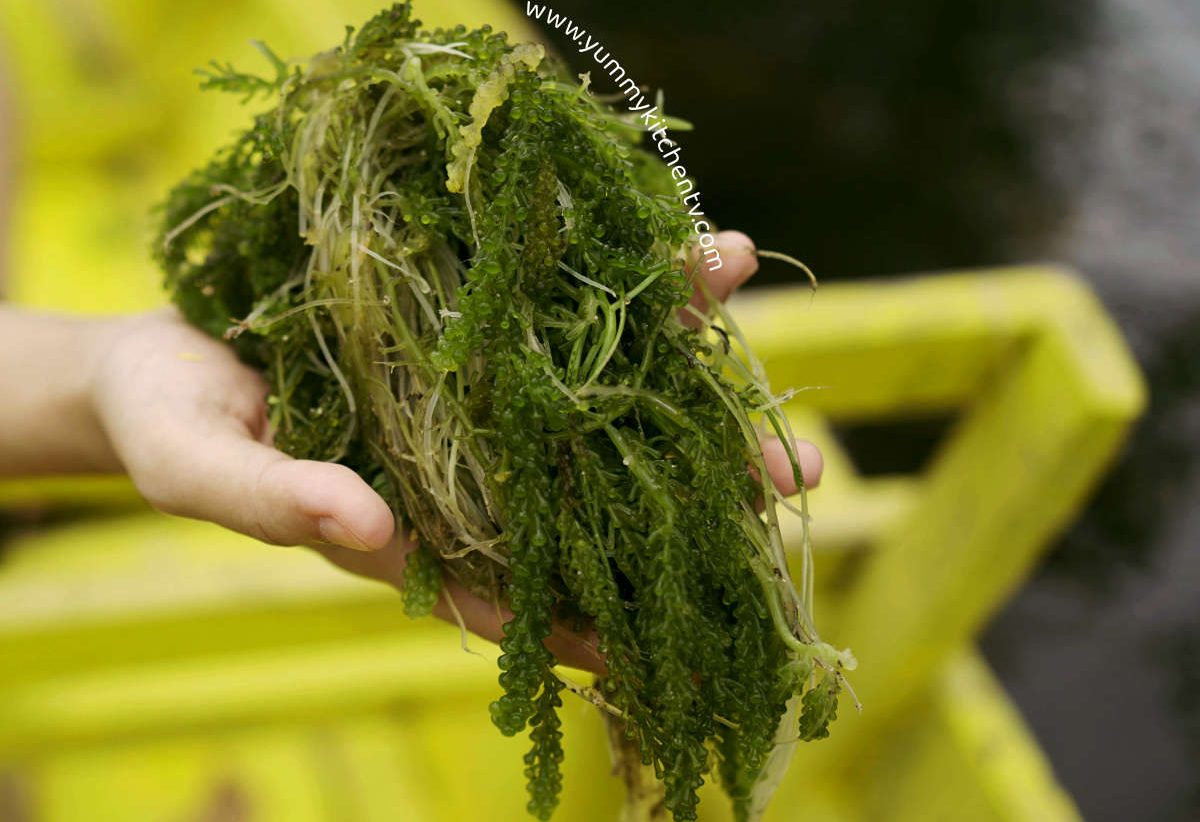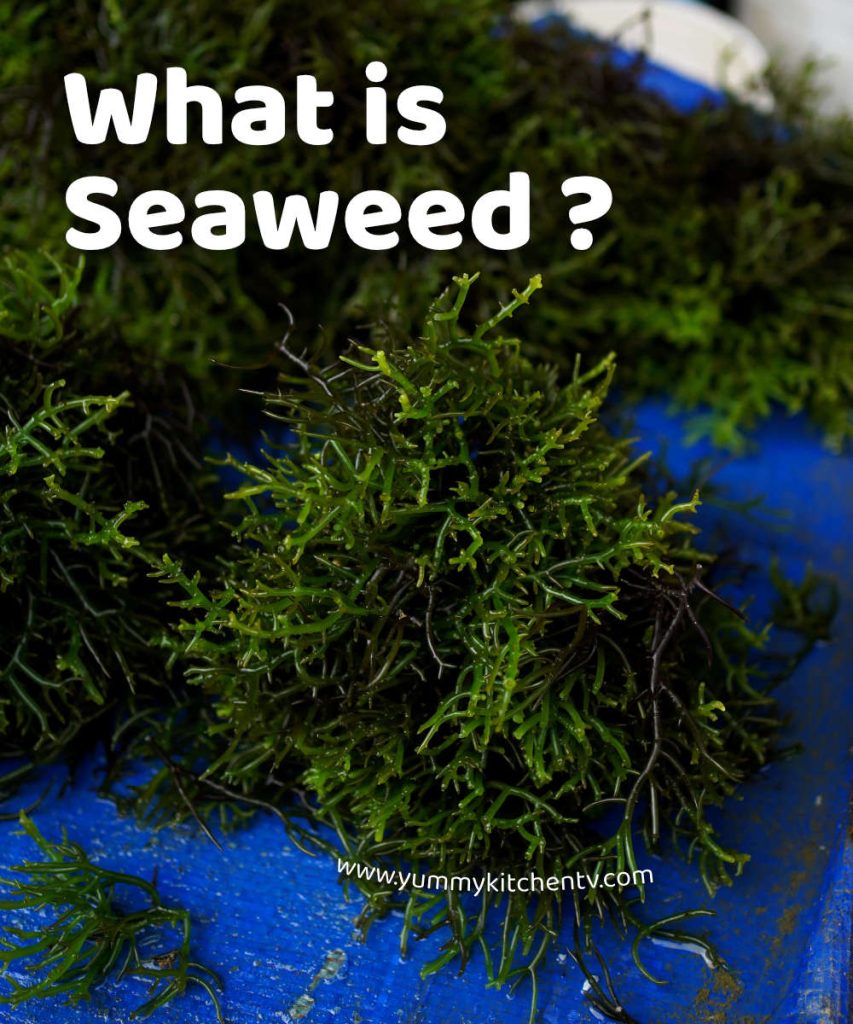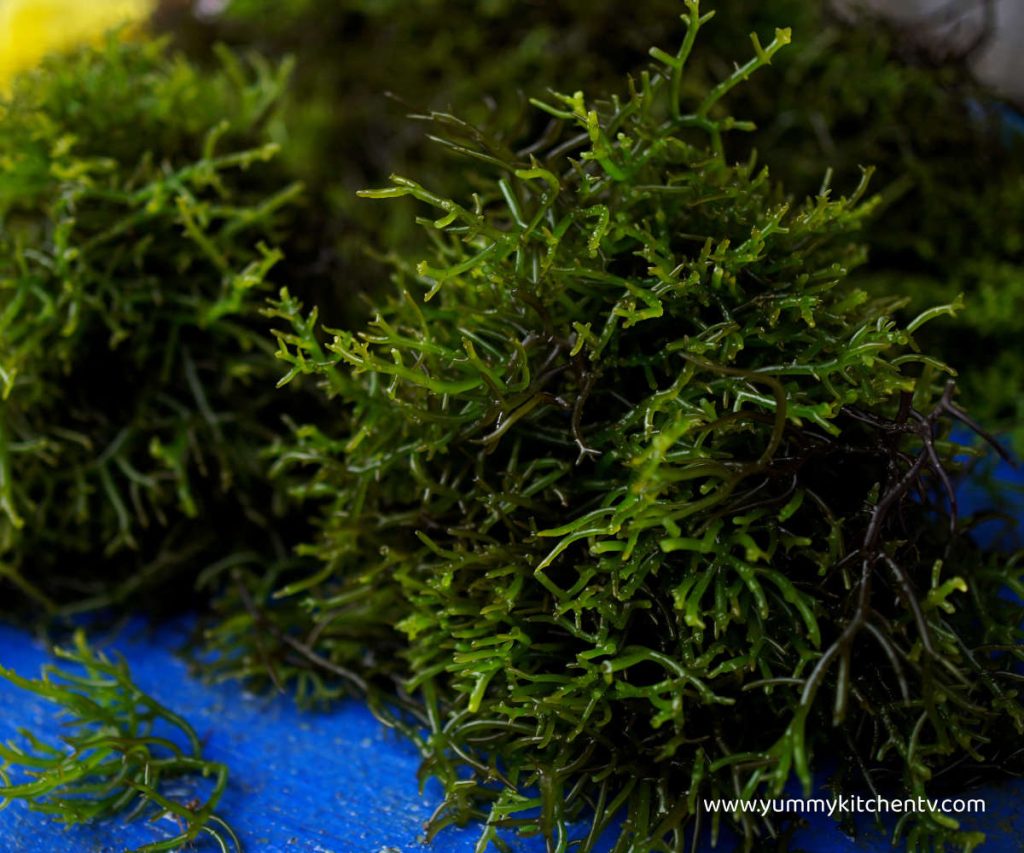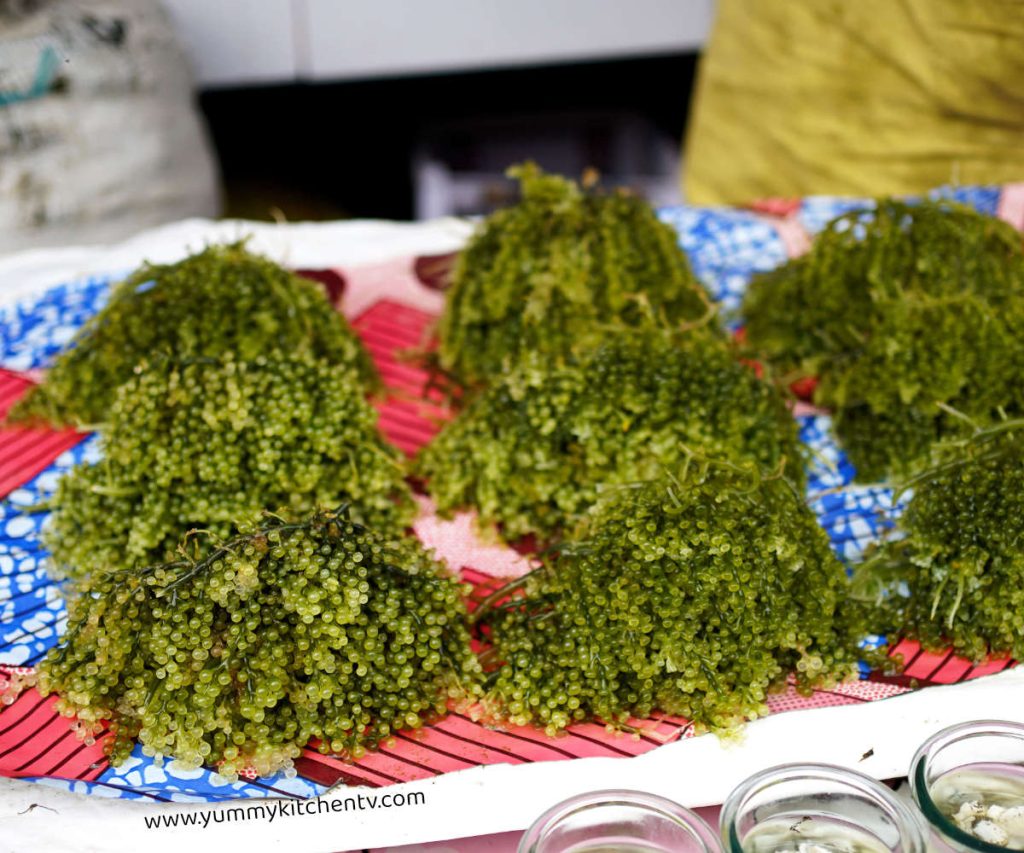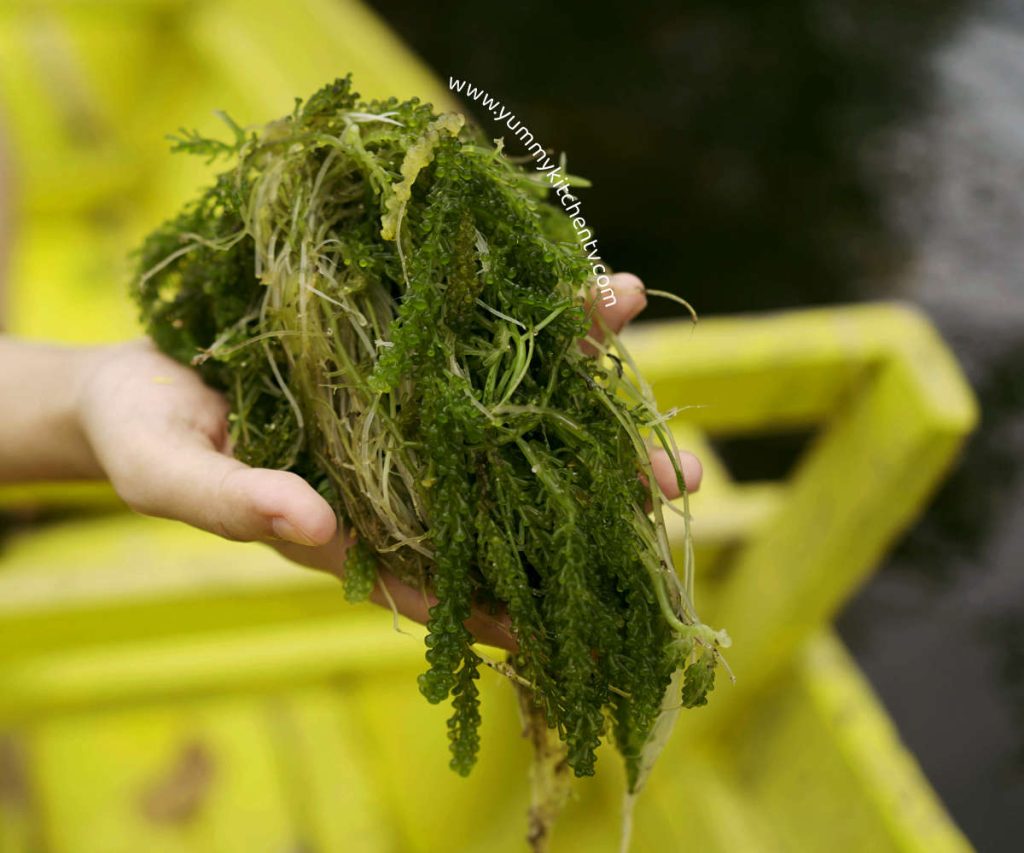Seaweed is a general term for as many as 11,000 species of algae, or plants that grow in a variety of waters. These macroalgae or marine algae come in different colors and are found in the bottom of the sea or other solid structures. Made into savory salty ingredients and snacks usually ready for consumption, as a rice wrapper or topper. It’s not just great to munch on, it’s rich with fiber, nutrients, and minerals making it full of benefits for the body.
A short Introduction
Seaweed is a common name for different types of algae species growing in lakes, rivers, and oceans. These plants usually contain chlorophyll (macro-algae) and are classified into green, brown, or red algae. All being an essential component to marine life, they provide shelter and food to different organisms. Said to have come around 3,000 years ago. Japan has been using seaweed as far back as 2,000 years, and until the Middle Ages, as per written records, these were only consumed by Japanese aristocrats. Around 600 BC China, the supply of seaweeds were only given to the King’s special guests. China was said to be where the first author who wrote the book about sea vegetables came from. In Europe these were used as medicine, the Greeks used these to feed animals.
Nowadays, these are seen all over the world as a delicacy. Being an important source of flavor for many Asian cuisines, the popular ones being Korean seaweed soup, wakame seaweed salad, edible seaweed snacks like, crispy seaweed chips, salty nori toppers, flavored agar-agar, and many more. You can even see pet owners feeling animals like crustaceans, cats, and dogs with seaweed, though you have to check this with your veterinarian to really make sure.
Seaweed types :
There are different types of algae, as well as seaweed food or dishes made around the world. Being a staple of many Asian diets, especially Japan, Korea, and China, all three being the biggest producer of seaweed snacks. The ones below are among the most common:
- Kombu, a brown algae used as an umami enhancer. Boiled with the broth, then removed after. You can commonly find these in the Japanese broth, dashi.
- Kelp, also a brown algae, dried into sheets and made into vegan and gluten-free alternative noodles.
- Arame, a kelp with a milder sweet flavor with a firm texture. Added into a variety of cooked and baked dishes.
- Dulse, a red algae with a chewy soft texture said to almost taste like bacon. Eaten raw or as a dried snack.
- Sea grapes, algae which strands have bubble like ends. Usually eaten fresh by mixing it with soy sauce and calamansi or any seasoning.
- Nori or Laver, it might look like a dark mossy green, but these are actually made of red algae, dried and cut into sheets. Used to make sushi, or to be eaten as a snack.
- Sea lettuce, a type of Nori that is eaten raw in salads or cooked in soups.
- Wakame, similar to kombu, but the smaller bite sized edible version is added with the tofu at the end of cooking the soup, or into a side salad. These are considered cooked after it’s rehydrated and soft.
- Agar and carrageenan, are like thicker firmer jelly substances made from algae, used to make thickening agents and help solidify or firm up baked goods.
- Blue-green algae or spirulina (chlorella), edible freshwater algae often turned into a protein supplement in powdered form. Sometimes added in drinks and desserts just to turn it into a beautiful blue color.
Seaweed Benefits
Is seaweed good for you? Freshy taken out from salty waters, or commercialized and turned into a seaweed snack or an easy to add ingredient to complete your dishes. This rich source of vitamins, minerals, antioxidants, and thyroid supporting iodine can benefit almost everyone who gives it a go:
- Fights off and heals cell damage, making the body’s immunity stronger.
- These have antioxidants that are needed by the body to prevent and slow down signs of aging.
- Keeps the gut happy by feeding it good bacteria, making digestion easier and protects your intestines.
- Lowers cholesterol levels, and because it feeds the gut with fiber, it also helps with weight loss. This also makes the body feel fuller for longer.
- Improves blood pressure and heart health. A rich source of soluble fiber that also contain omega-3 fatty acids.
- Helps the thyroid function better. Algae has a good amount of iodine. Not only does it do wonders to your metabolism but can help against problems like low energy, forgetfulness, depression, dry skin and weight gain.
Seaweed Uses
Eaten by many for its great taste and source of benefits. But did you know seaweed has more uses than a source of food. Here are just some examples:
- Are being developed into fibers that are used in textiles, like creating bandages, bio yarn, dyes, paper coating, explosive and gels.
- An ingredient used in toothpaste, paints, and cosmetics.
- Used as fertilizer. Not on heavy soils but placed on the surface of sandy soils. Creating a barrier and antifungal properties helping crops grow.
- Seaweed baths and body care products, it’s been confirmed to help body stress by relaxing muscle aches and joint stiffness, and relieve skin problems like acne,eczema, or psoriasis.
- In the medical world, algae does show much effectiveness in one’s health, and is believed to be a cure to many diseases. Some experiments have been made to learn its effectiveness in bone-replacement therapy.
How the Philippines enjoys ‘Lato’
An organic snack that grows from salty waters, a slimy, slippery, green, sometimes brown or red color, isn’t just great for the body’s health but a treat to the tastebuds. In the Philippines, these are called ‘lato’ or ‘guso’, with 893 identified species found in the country. Available fresh in the wet market or grocery stores. These are usually eaten on the day it’s caught and made into a seaweed salad or appetizer. Under the Bureau of Agricultural research, products like the traditional snack or drink ‘gulaman’, cookies, marshmallows, juice, flan, and noodles (pancit canton, pancit luglug, carbonara, or spaghetti) are made out of seaweed. Non-edible uses like cosmetic products, fertilizers, medical commodities, air condition filtration systems and packaging materials also come from this algae.
While it was a negligible item in the ‘60’s. Now 50% of the aquaculture in the Philippines comes from seaweed. The Philippines have noticed it’s substantial role and have developed and are still developing to further help revenues for the economy.
There is a noticeable driven interest with this green algae, with the unique flavor, texture, products it can produce, and health benefits. The proof being a number of these are seen sold around wet markets for the fresh seaweeds, grocery stores or specialty asian stores selling dried and packaged seaweed snacks and seaweed based cooking ingredients.

